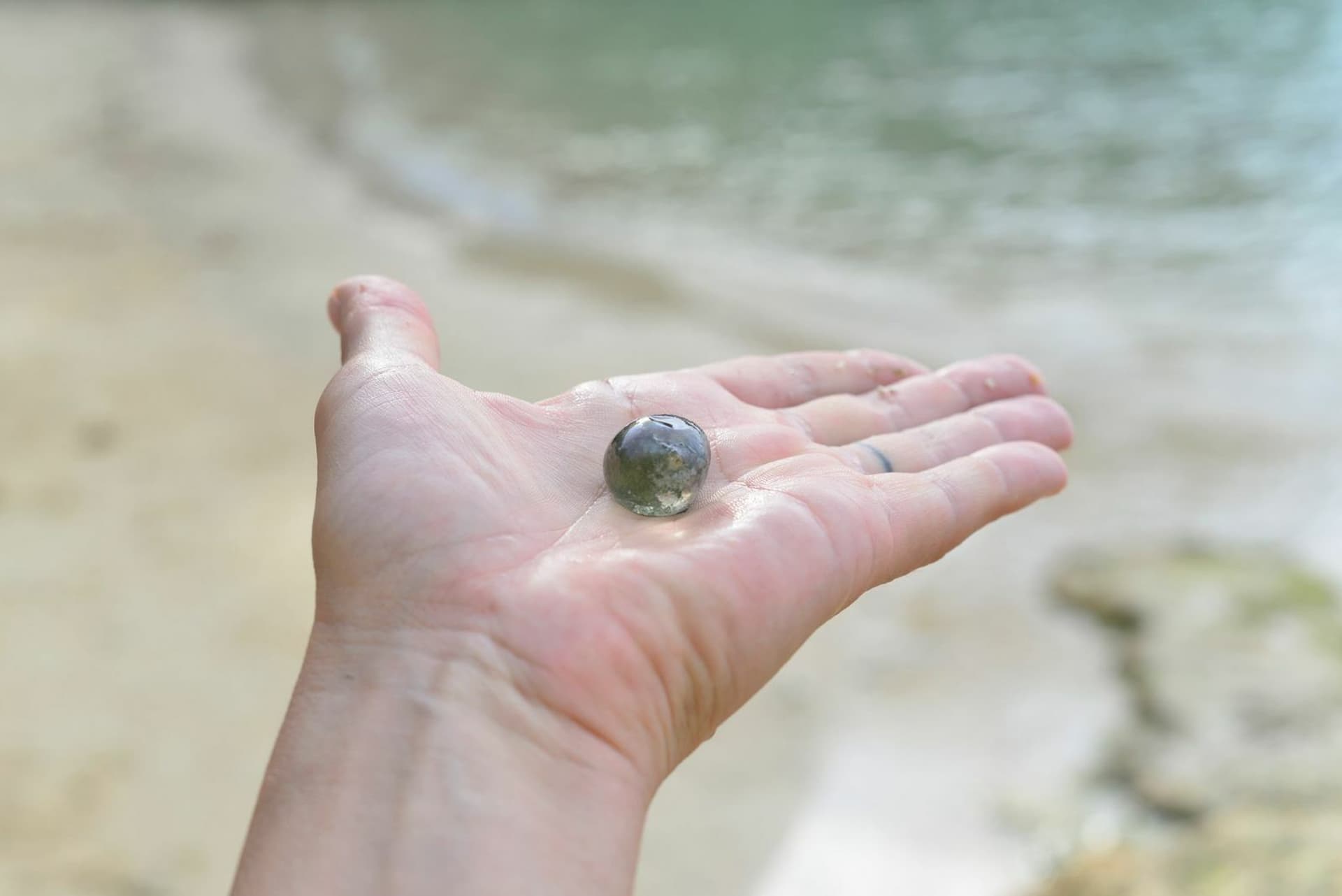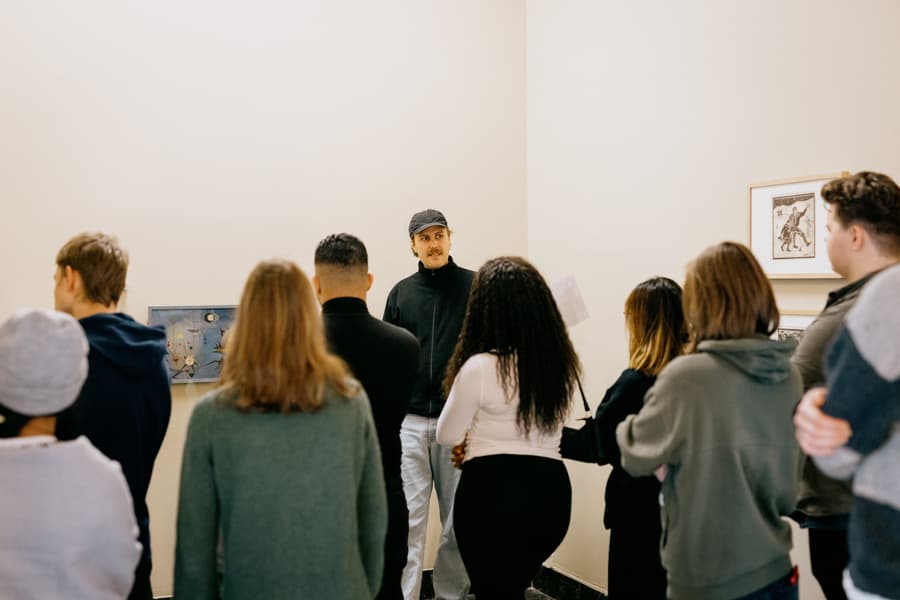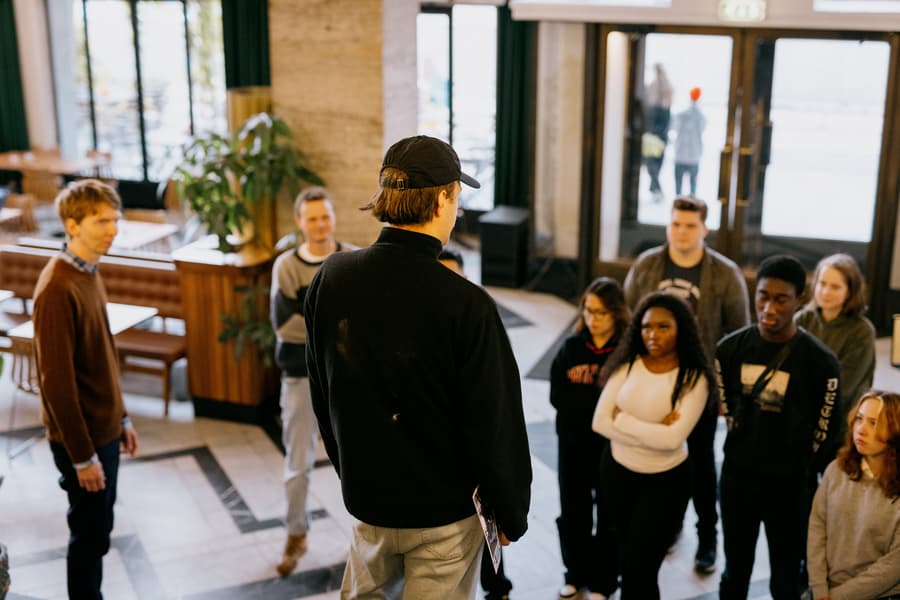Parallel Ecologies
Thursday 24.06.21

Parallel Ecologies: Art, Media and Environment is a virtual symposium with Ina Blom, Synne Tollerud Bull, Jennifer Gabrys, Stefanie Hessler, Ursula Münster, and Susanne M. Winterling. The symposium was supposed to take place at Kunstnernes Hus Kino in June 2020. Due to current restrictions, the event has been moved online.
The virtual event is free and open to the general public, but advance registration is required. The Zoom registration is now open.
For the latest information, click here. For practical enquiries, please contact Susan Falkenås. For other questions, contact Sara R. Yazdani.
About the symposium
Exploring the life of beings both technical and natural in the 1950s and 60s, the philosopher Gilbert Simondon intimated that a being is nothing on its own but only becomes through dynamic interactions with other beings. Such becoming presumes the notion of an environment, the constitution of a “milieu” alongside the individuation and concretization of beings. To speak of individuation rather than singular individuals is to acknowledge the processual nature of “beings” – whether technical or human. Such notions allow us to consider the environmental nature of all beings, the sense that things such as natural materials, humans, animals or basic entities like molecules or pieces of code come into existence through their continual interaction.
This symposium seeks to examine such conceptualizations, the notions that not only humans but technical- and natural objects too form “milieus,” ideas that have been variously explored by artists. More precisely, we wish to discuss how artists since the early twentieth century have probed into the material specificity of various objects and technologies to further explore the processes of their individuation and differentiation.
Seeking to contribute to the development of a genealogy of ecological thinking of contemporary art, Parallel Ecologies is concerned with our conceptions of existence, of ways of being and modes of sensations as they relate to the condition of Earth in an era defined by some as the “Anthropocene.” Rather than defining our era in terms of the human, however, or of the “Anthropos,” we may instead understand our condition – the condition of life itself – in terms of “entanglements,” “symbiotic relations,” “networks,” “processes” and “milieus”.
For Parallel Ecologies, the closing symposium of the project diagrams, a group of outstanding artists as well as scholars from the fields of visual art, art history, and media studies have been invited to discuss environmental perspectives on and within modern and contemporary art.
Ina Blom (University of Oslo), Synne Tollerud Bull (University of Oslo), Jennifer Gabrys (Cambridge University and Goldsmiths, University of London), Stefanie Hessler (Kunsthall Trondheim), Ursula Münster (University of Oslo), and Susanne M. Winterling (Trondheim Academy of Fine Art).
Parallel Ecologies: Art, Media and Environments is a collaboration Media Aesthetics research group at the University of Oslo and Kunstnernes Hus, convened by Sara R. Yazdani.
The symposium forms part two of Parallel Ecologies: Art, Media and Environments, a workshop convened by Sara Eliassen (Academy of Fine Art, KHiO), Ingrid Halland (AHO and University of Bergen), Synne Bull (Bull.Miletic), and Sara R. Yazdani (HU, Berlin).
The symposium is part of diagrams, a project of exhibitions, workshops and discursive production, initiated by Sara R. Yazdani and generously supported by Arts Council Norway, Norsk Fotografisk Forbund, and the Media Aesthetics research group at the University of Oslo.
Program
10.30–10.50 Sara R. Yazdani: Introduction (Art and Parallel Ecologies)
10.50–11.50 Ina Blom: Intramachinic Weather: Two Cases of Digital Atmospherics (chair: Sara R. Yazdani)
12.00–13.00 Synne Tollerud Bull: Zoom Blue Dot: Proxistant Earth Models in the Anthropocene (chair: Aurora Hoel)
13.00–13.45 Break
13.45–14.45 Stefanie Hessler: Sensing Nature: curatorial work at the intersection of environmental and social justice (chair: Ingrid Halland)
15.00–16.00 Jennifer Gabrys: The Forest that Walks (chair. Pasi Väliaho)
16.10–17.10 Susanne M. Winterling in conversation with Ursula Münster: Parallels (not more anthropocentric paths) in planetary sensing as ways and method of art/science, decolonial environmental humanities collaborations (chair: Malin Graesse)
Abstracts
Speakers
Ina Blom is a professor at the Department of Philosophy, Classics, History of Art and Ideas at the University of Oslo and Wigeland Visiting Professor in the Department of Art History, University of Chicago. Recent books include The Autobiography of Video. The Life and Times of a Memory Technology (New York: Sternberg Press, 2016), On the Style Site. Art, Sociality and Media Culture (New York: Sternberg Press, 2007/2009) as well as the edited volumes Memory in Motion. Archives, Technology and the Social (Amsterdam University Press, 2016) and Raoul Hausmann et les avant-gardes (Paris: Les presses du réel, 2014). She is currently working on a book project with the working title Straight Lines and Infrastructural Sensibilities.
Synne Tollerud Bull, Ph.D. is a visual artist and theorist. She formed the artistic duo Bull.Miletic with Dragan Miletic in 2000. Their robotic video installations have shown internationally, and received numerous grants and awards including the Excellence Award at the 2020 Japan Media Arts Festival. Bull is the co-editor of Urban Images: Unruly Desires in Film and Architecture (Sternberg Press, 2011) with Marit Paasche and Screen Space Reconfigured (Amsterdam University Press, 2020) with Susanne Ø. Sæther. Most recent publications include “Cinéma Trouvé: The City as a Moving Image” (Papers on Language & Literature, 2021) and “Time to Reflect Reality” (Forthcoming, in Deep City 2021.) Bull is currently working on a monograph on Proxistance and a co-edited volume on Urban Ecologies. Upcoming solo shows include Proxistant Vision at San Francisco Museum of Craft and Design (2022-23) and a new commission at Regelbau 411, Denmark (2022). See more at https://bull.miletic.info and https://urbanecologies.net.
Jennifer Gabrys is Chair in Media, Culture and Environment in the Department of Sociology at the University of Cambridge, and Visiting Professor in the Department of Sociology at Goldsmiths, University of London. She is Principal Investigator on the project AirKit, and she leads the Citizen Sense project, both funded by the European Research Council. In May 2020, she is beginning a new ERC-funded project, Smart Forests: Transforming Environments into Social-Political Technologies. She is the author of Program Earth: Environmental Sensing Technology and the Making of a Computational Planet (2016); and Digital Rubbish: A Natural History of Electronics (2011); and co-editor of Accumulation: The Material Politics of Plastic (Routledge, 2013). Her recent and in-progress books include How to Do Things with Sensors (University of Minnesota Press, Forerunners series, 2019), and Citizens of Worlds: Open-Air Toolkits for Environmental Struggle. Together with Ros Gray and Shela Sheikh, she is co-editing the “Planetarities” book series published through Goldsmiths Press. Her work can be found at citizensense.net and jennifergabrys.net.
Stefanie Hessler is a curator, writer, and editor. Her work focuses on ecologies and technology from an intersectional feminist perspective. She is the director of Kunsthall Trondheim in Norway, where she is currently preparing the exhibition Sex Ecologies and editing the accompanying compendium on queer ecologies, sexuality, and care in more-than-human worlds (forthcoming, The MIT Press, 2021). Recent curatorial projects include Down to Earth at the Gropius Bau/Berliner Festspiele in Berlin (2020); Joan Jonas: Moving Off the Land II at the Museo Nacional Thyssen-Bornemisza in Madrid (2020) and Ocean Space, Venice (2019); the 6th Athens Biennale (2018); and the symposium Practices of Attention at the 33rd Bienal de São Paulo (2018). Hessler's monographic book Prospecting Ocean was published by The MIT Press and TBA21–Academy in 2019. She is visiting research scholar at Westminster University in London and curator of the 17th MOMENTA Biennale in Montreal titled Sensing Nature (2021).
Ursula Münster is an associate professor of environmental humanities and the director of the Oslo School of Environmental Humanities (OSEH). She has done extensive ethnographic fieldwork in South India on issues of gender, conservation and more-than-human relations. Her research and teaching interests include multispecies studies, political ecology, wildlife conservation in the Anthropocene, extinction studies, and practices of more-than-human care. She is currently working on the publication of her second monograph with the working title: "Encountering Wildlife."
Susanne M. Winterling works across a range of media to explore the sentient economy, digital cultures and the social life of materials in the environment. Forms and materials narrate about species and the elements in today’s challenging geopolitical context. Winterling’s practice reflects upon political as well as aesthetic entanglements and power structures among human/ animal/ matter. She is a part of the collective 'The Kalpana' and pingpongs the art of conversation on pandorasbox.susannewinterling.com. Recent exhibitions and projects include Gravitational currents and the life magic, Empty Gallery HongKong; Barents spectacle, Kirkenes; Myths of the Marble, HOK Oslo and ICA Philadelphia; An Inventory of Shimmers, MIT List Boston, Contour Biennale 2017; Sitevisit, Kunstverein Freiburg; Complicity, Kunstverein Amsterdam; Tidalectics, tba 21 Vienna and MoMa Dubrovnik; Variations on time, Karma Ltd. Extended; Between Bodies, Henry Art Museum University of Washington, Luleåbiennalen 2018.
Sara R. Yazdani is a visiting scholar in art history at Institut für Kunst- und Bildgeschichte and the cluster of excellence "Matters of Activity: Image Space Material" at Humboldt University, Berlin. Her fields of research and teaching are modern and contemporary art with a particular focus on ecologies and the relationships between art, media, and technologies. Her work is published in Art Journal, Afterimage (forthcoming), Artforum, Mousse Magazine, Kunstkritikk, Art & Education, as well as in a number of anthologies. She is currently working on her first monograph, Self-Sufficient Images, a critical history of Wolfgang Tillmans’s oeuvre, and the reemergence of an ecological, processual approach to visual art.
Picture above: Susanne M. Winterling, cosmo algae, 2019, photoprint
Courtesy of the artist and Parrotta Contemporary Art
© VG Bild-Kunst, Bonn 2021


